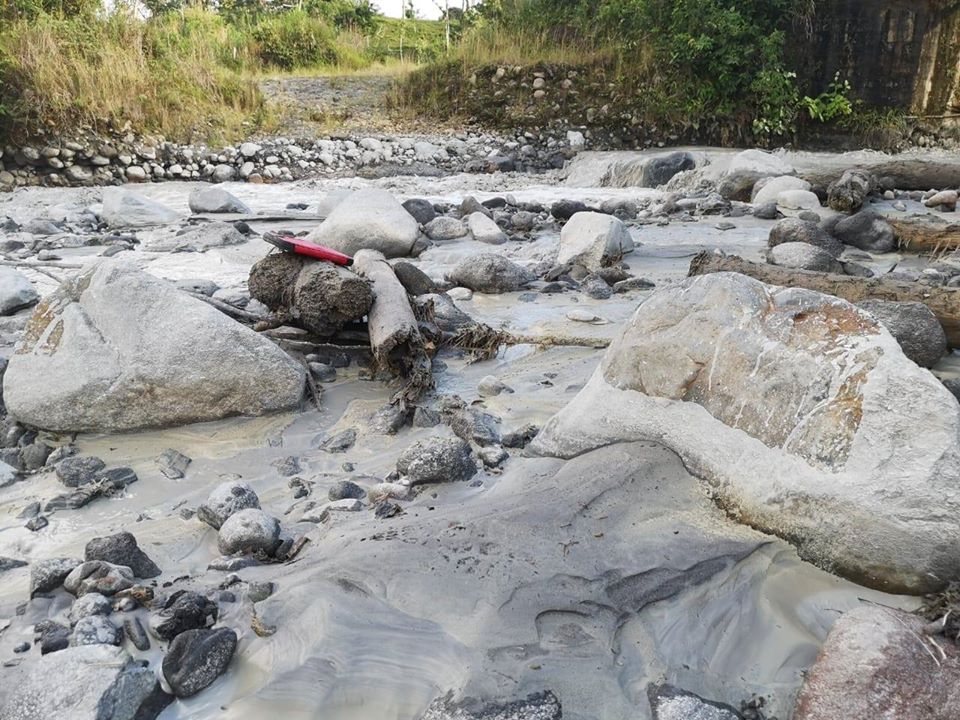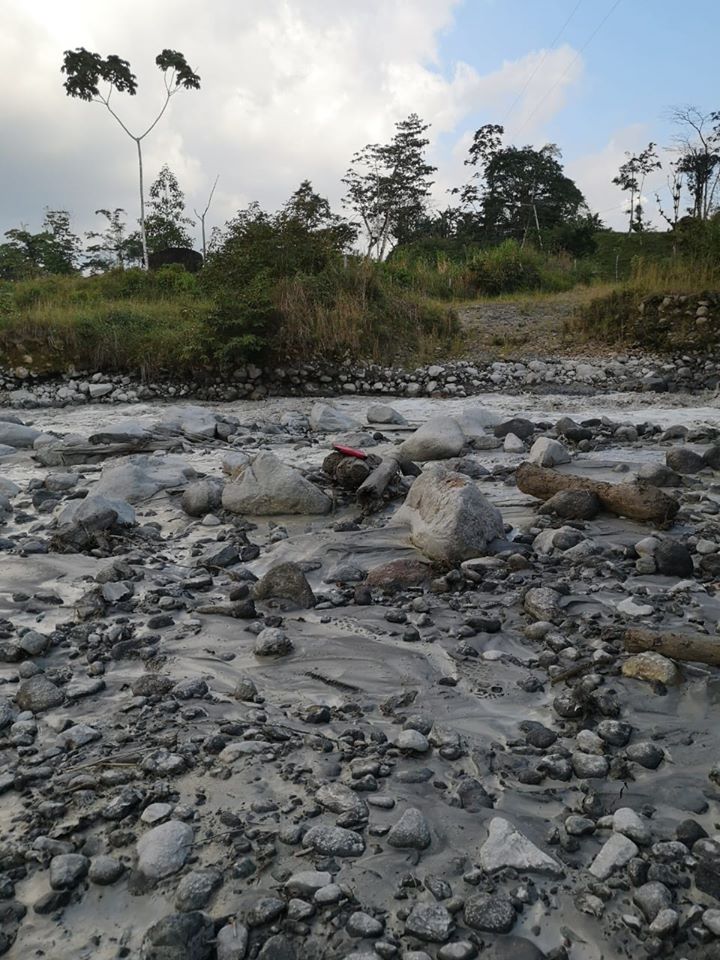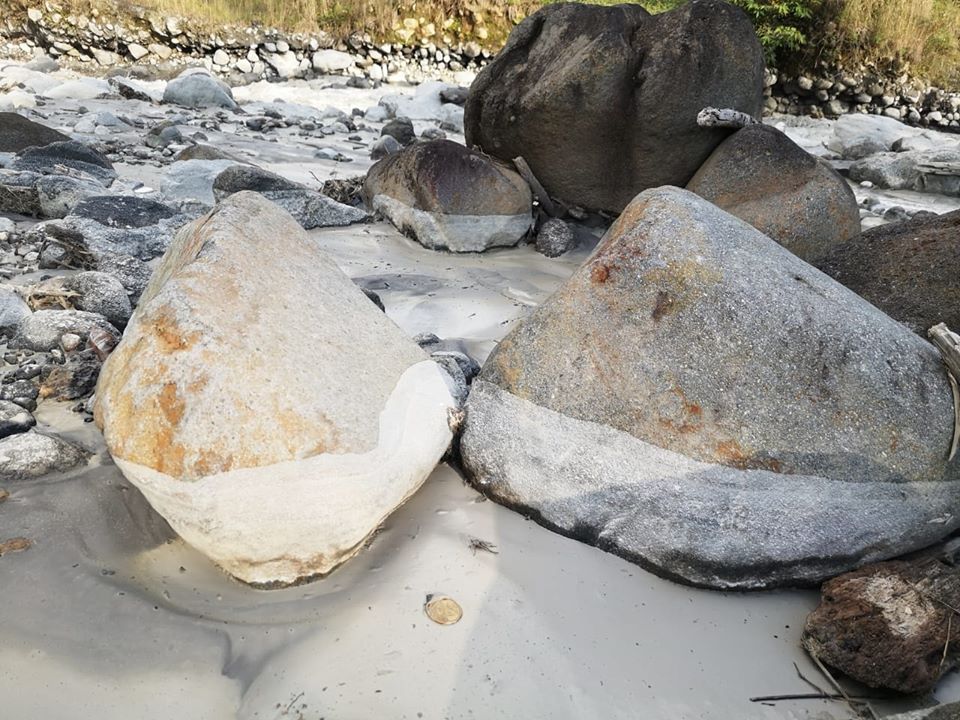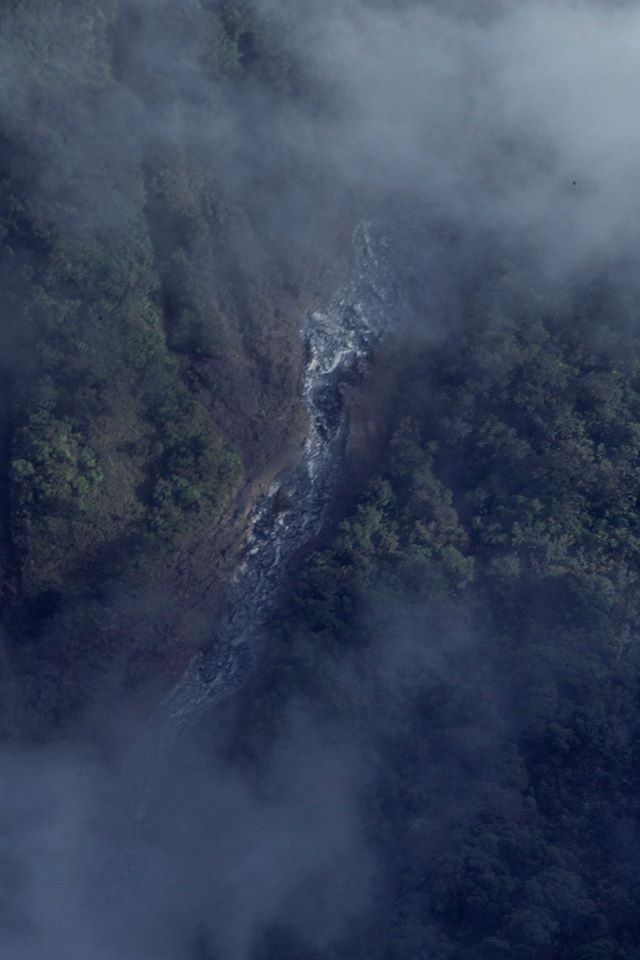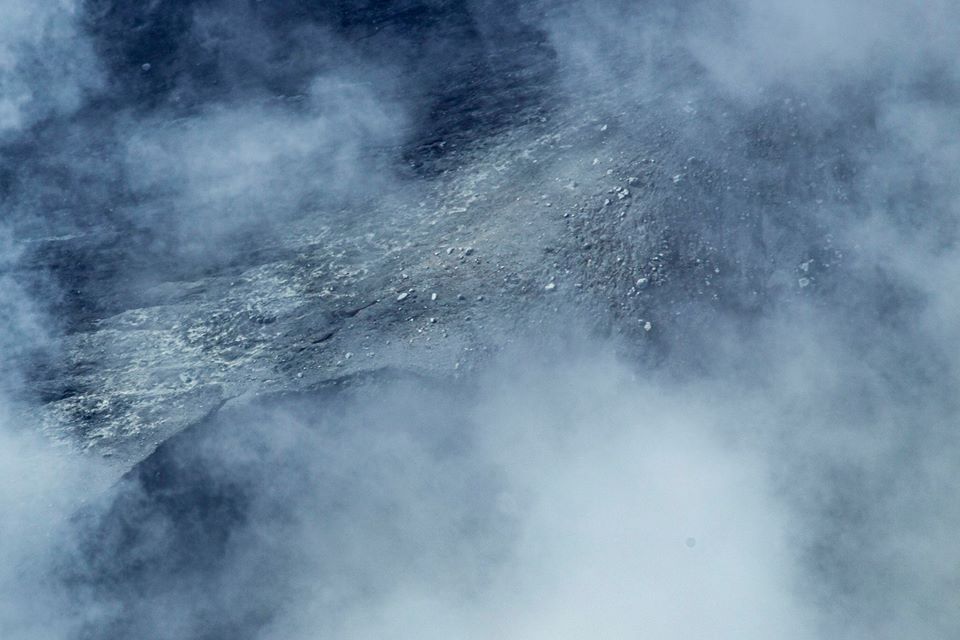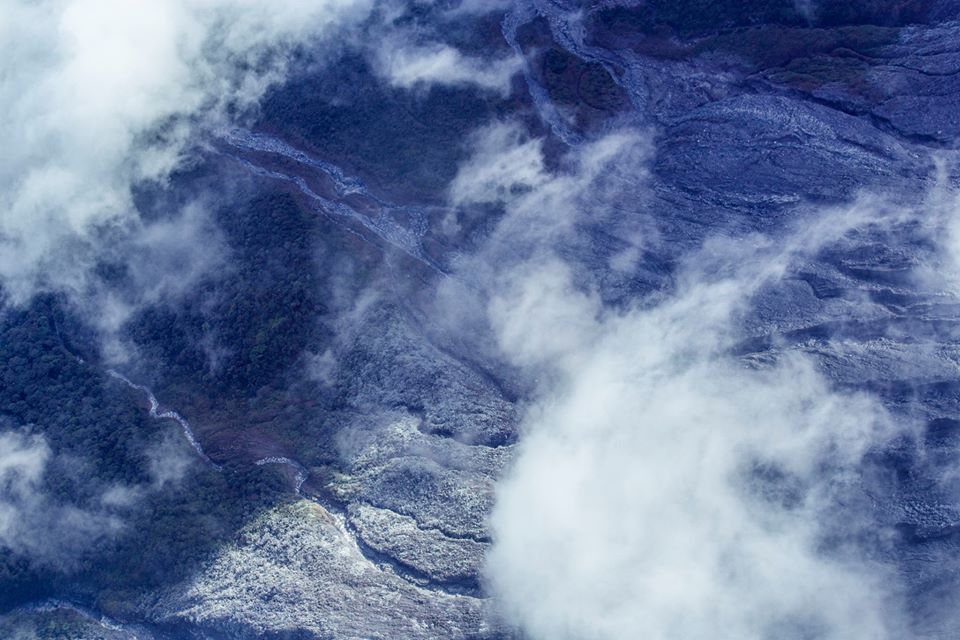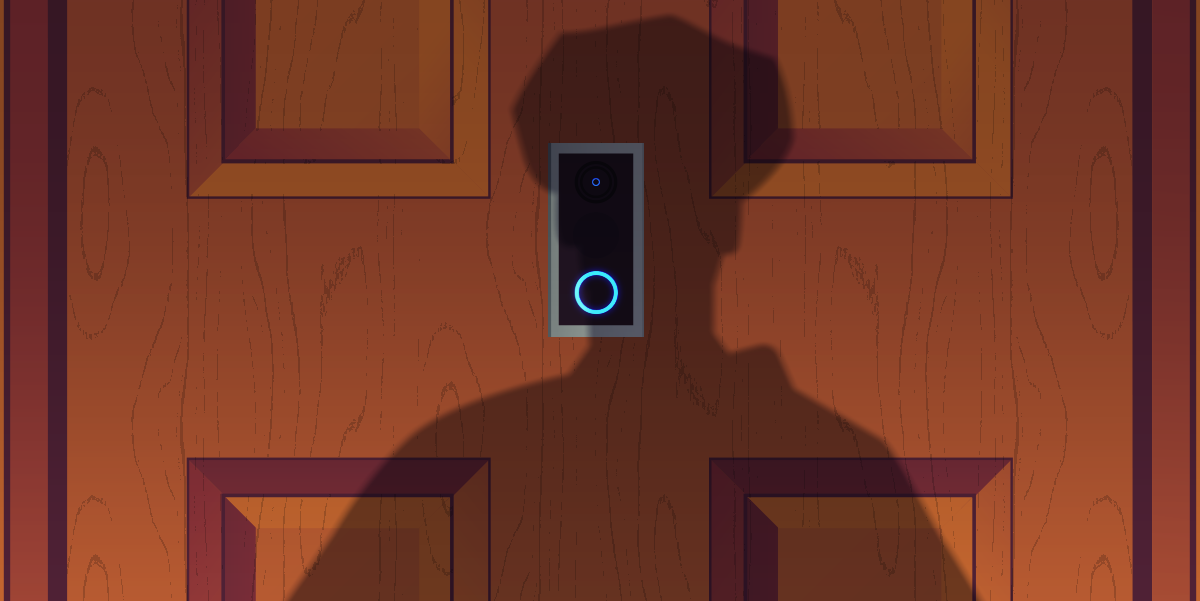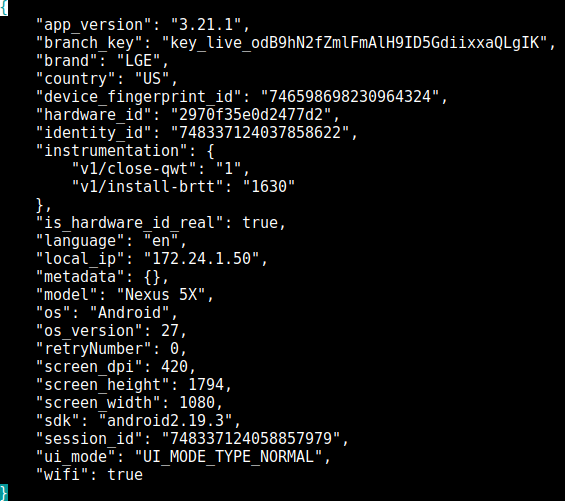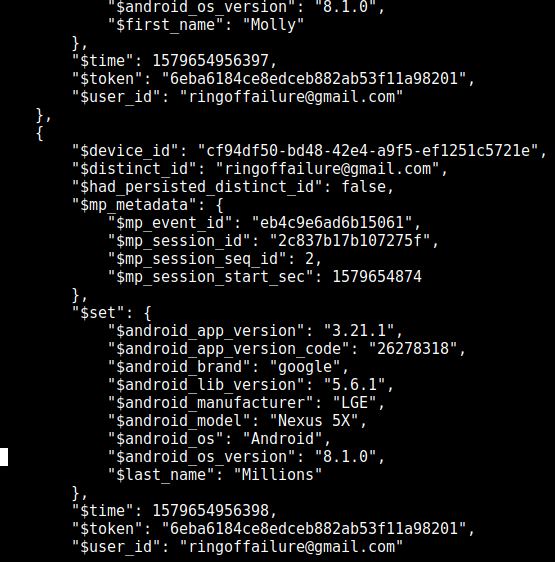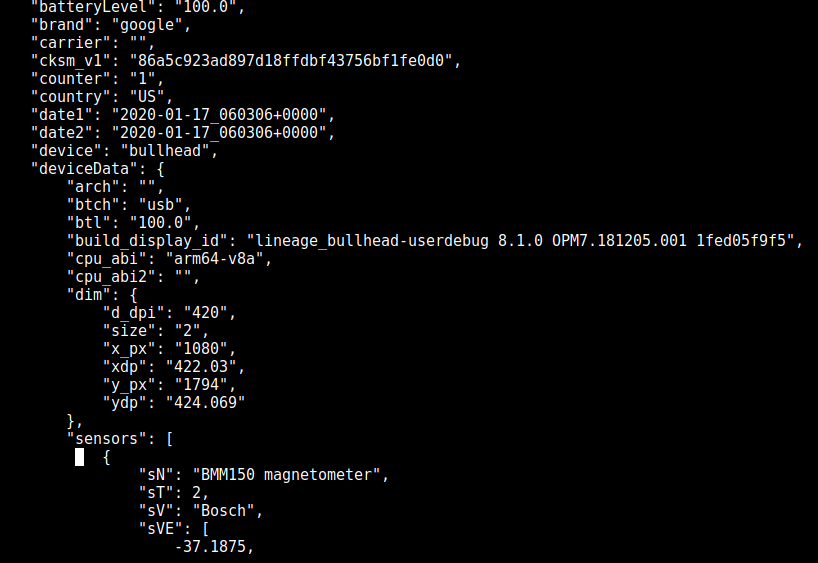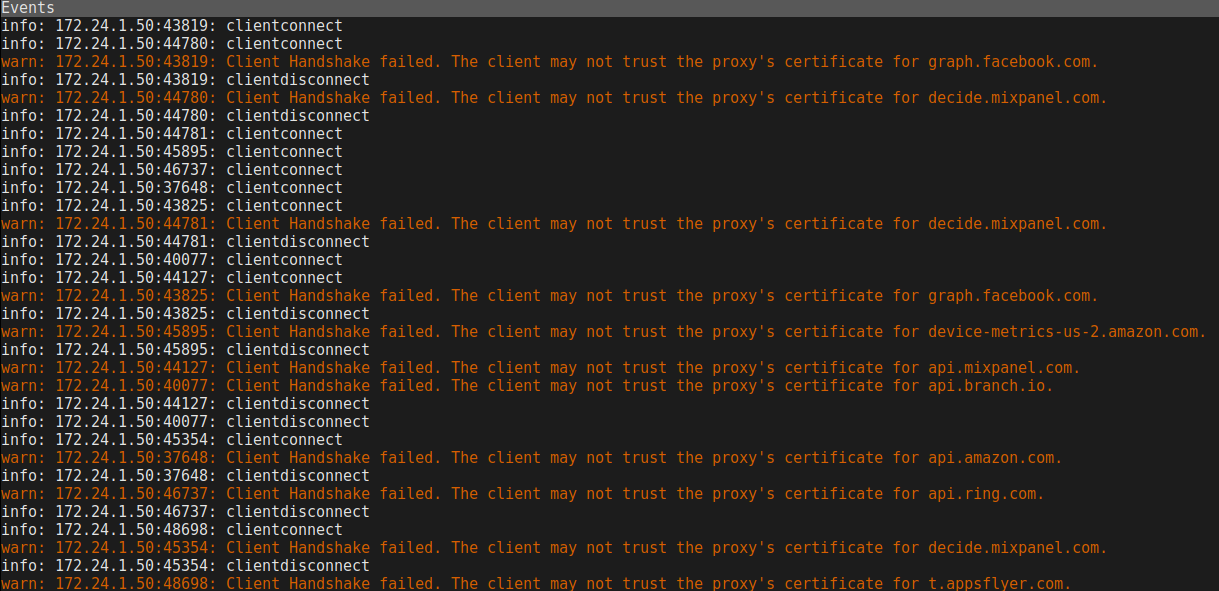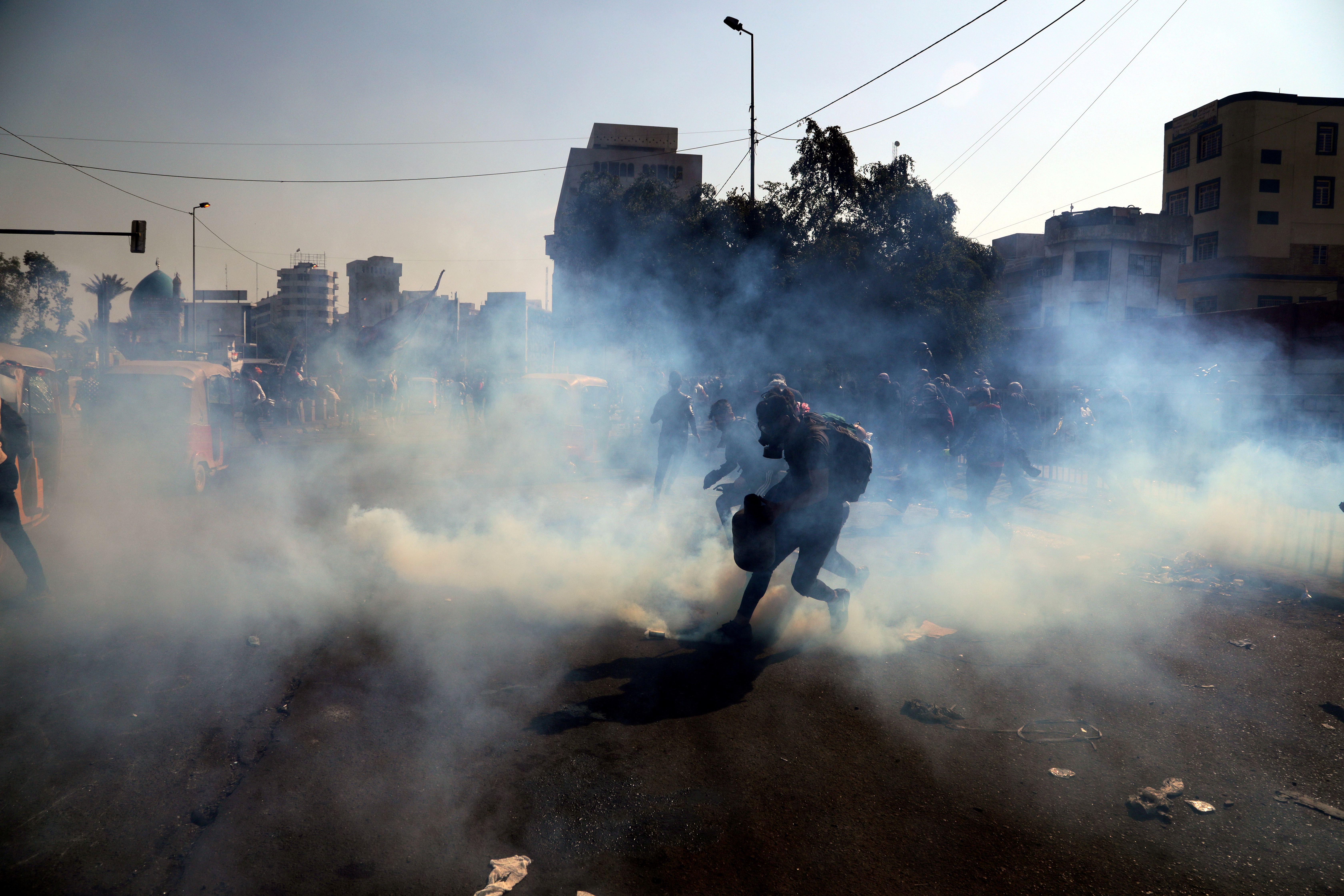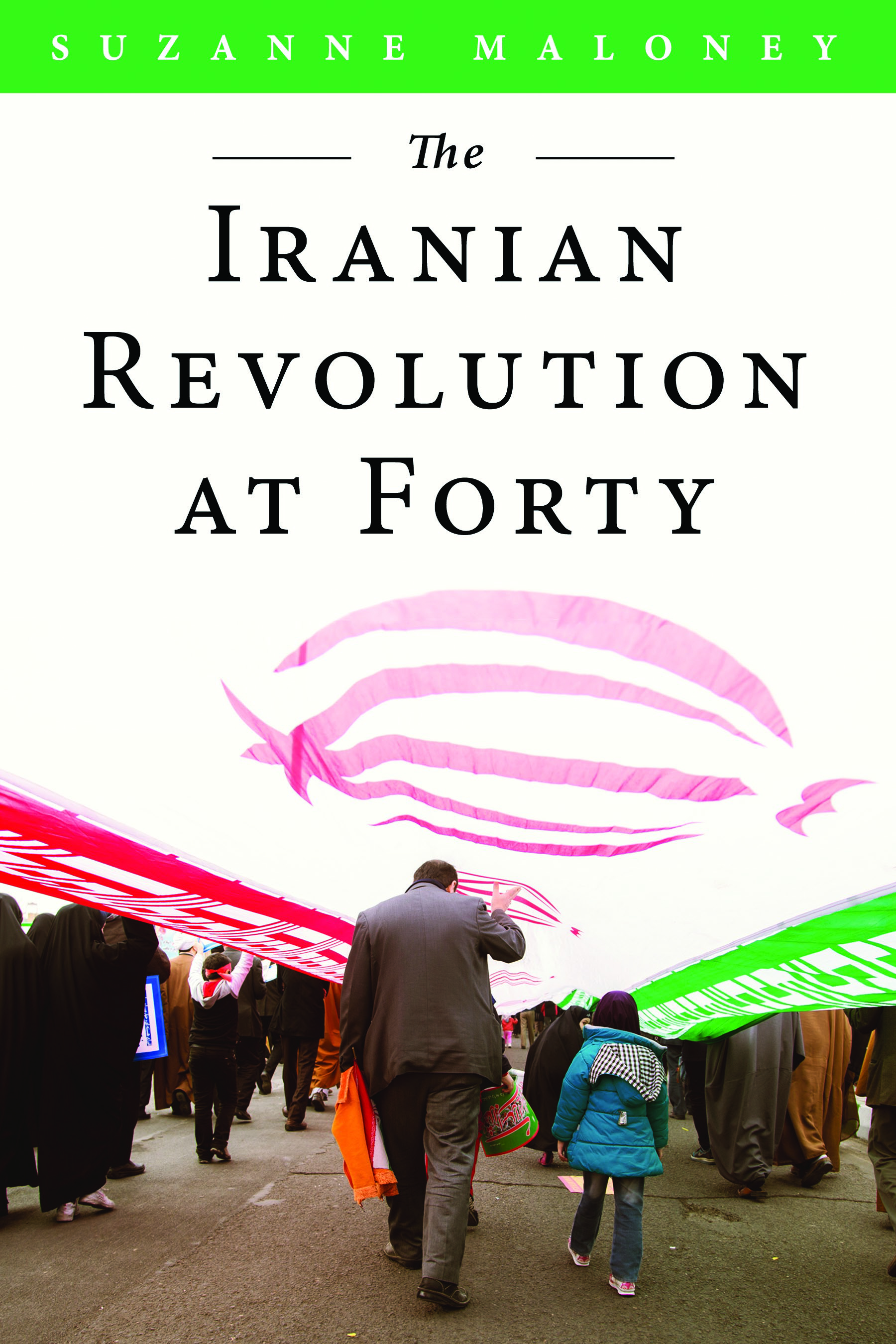GUINEA / POLICE BRUTALITY -
Video shows police in Guinea using a woman as a human shield
UPDATED 01/31/2020

Screengrab from a video from Guinea showing police officers apparently using a woman as a human shield.
A concerned citizen filmed police using a woman as a human shield in Conakry, Guinea on January 29. The FRANCE 24 Observers team spoke with a man who cared for the woman after the incident, to find out what happened and how she is doing.
The video, which is just over three minutes long, shows a police officer holding onto a woman and pushing her in front of him as he advances alongside several other officers. The police were facing off with several young men during the latest in a series of protests against the possibility of President Alpha Condé serving a third term.
The three officers push the woman in front of them for several metres, apparently to protect themselves from the rocks that the young men are throwing. Eventually, the scene ends in chaos after one of the officers fires a shot. The police retreat, one grabbing the woman and half-dragging, half-carrying her.
The FRANCE 24 Observers team was able to identify the exact location in the Wanindara 3 neighbourhood where the incident took place. A resident of the neighborhood sent us a photo and our journalists were able to match the tree and the houses in the photo with those in the video.

'The police had run out of tear gas so they decided to protect themselves by using this woman as a human shield'
Abdourahmane Bah, who lives in the neighbourhood, obtained the video and posted it on Facebook, where it received more than 350,000 views in less than 24 hours. He was nearby when the incident happened and after hearing yelling in the street, he came across the woman, who was extremely distressed. Bah ended up taking care of her while she got her bearings.
The lady in question works as a cleaner in the Enco 5 market, which is a few hundred metres away. She came to our neighbourhood because she had heard that morning that the child of one of her friends had sustained a foot injury during the protests. She was coming to visit the family but she didn’t know the neighbourhood well because she doesn’t live here.
She ran into the police officers, who told her to keep close because there were a group of rowdy young protesters nearby. But it was a trap because it quickly became clear that the officers actually wanted to use her as a shield from the young men, who were throwing rocks at them. The police had run out of tear gas and so they decided that they’d use this woman to keep themselves safe. They wanted to negotiate with the protesters, but they refused.

'The woman has a young baby'
After dragging the woman for several meters, the officers left her lying on the ground and headed off towards Avenue Le Prince [Editor’s note: the main street in the neighbourhood]. We brought the woman into our home. She was extremely distressed. Her clothes were covered with mud so my mom gave her some new clothes to wear.
Some people were saying online that she’s pregnant. That’s not true, but she does have a six-month-old baby and she was terrified that she’d be injured or killed in the clashes. She did get several cuts on her knee.
What happened is unacceptable. This is the first time that I’ve seen police behave like that with a woman. It shows that even women aren’t safe. Our neighbourhood has seen some of the fiercest repression since the start of the protests and there is a constant presence of security forces. We don’t feel safe.
The FRANCE 24 Observers team was able to confirm the identity of the woman, though we are not naming her. She gave an interview to several Guinean media outlets, including GuinéeMatin. She told journalists that she had been traumatised by the incident and had "pain in her right foot".

The woman used as a human shield by police was interviewed by several local media outlets. This screengrab is from a report by Guinéematin.com. Because she did not give the FRANCE 24 Observers team permission to disclose her identity, we’ve blurred her face.
Three officers suspended
Our team also spoke to the minister for public safety, Albert Damantang. He said that three officers had been suspended and that a fourth officer present during the incident was yet to be identified. Damantang said that the officers would be brought before a disciplinary council and sanctioned imminently.
He said one officer claimed that he had seen the woman "hand stones to the youth”, which is why he stopped her in the first place. Damantang says that, for the time being, this version of events can’t be corroborated. He also repeated his apologies to the victim, which he had done previously in a video posted on Facebook. He also said that she had spoken on the phone with Mariama Sylla, the minister for social action, women’s rights and children, and would meet with her in person soon.
François Patuel a researcher at rights group Amnesty International who specialises in Guinea, said this video is another example of abuse carried out by Guinean police:
This incident of a woman being used as a human shield flies in the face of several international agreements signed by Guinea. The voluntary exposure of people to suffering or injury is a serious violation of human rights. But there is a long history of impunity in regards to abuses carried out by security forces in Guinea. Since 2010, more than a hundred people have been killed during protests.
Despite the many complaints filed by families, only one officer has been sentenced for these crimes and his direct superiors were not investigated at all.
Instances of police abuse have multiplied in Guinea since late 2019 as protests continue against constitutional changes that would allow President Condé to serve a third term. People were already angered when, on January 14, a video emerged showing an elderly man being mistreated by police.
Article by Alexandre Capron (@alexcapron)
Outcry in Guinea over police 'human shield' video

AFP / CELLOU BINANI
Guinean police have been clashing with anti-government protesters
Police in the West African state of Guinea are facing a storm of criticism over a viral video that apparently showed them using a woman as a human shield against stone-throwing protestors.
The video, whose source cannot be independently verified but whose authenticity has not been contested, spread fast on social media late Wednesday.
The footage is dated as of Wednesday and gives the location as the district of Wanindara.
It shows four helmeted policemen facing young protestors throwing stones.
One of the police moves in front of the protestors, pushing a woman in front of him, apparently against her will.
After an exchange of stones and anti-riot projectiles, the police suddenly fall back. The police officer grabs the woman under his arm and after a few yards appears to be dragging her along the ground.
The video has notched up several hundred thousand views and triggered a wave of online attacks on security forces.
General Ansoumane Baffoe Camara, director general of Guinea's national police force, told AFP that the main figure in the video had been arrested and "will answer for his actions".
The woman in the video, Fatoumata Bah, told local media that she was injured in the incident and went to hospital for treatment and then went home.
Bah, mother of five, says the police searched her, shoved her and threw her to the ground. Young protesters in the district recorded the incident, she said.
"Today, I'm in a lot of pain. My right foot is sprained and I have scratches on almost all of my legs," she said. "It was an insult to my dignity."
- Months of protests -
Police presented the alleged perpetrator, Brigadier Mamadou Lamarana Bah, who is unrelated to the victim, to reporters after his arrest. He claimed she had been supplying stones to the protesters, but that he had grabbed her to protect her.
"I swear before God, I never wanted to hurt her, it was just to save her."
Senior police officials said there was no doubt he had been sheltering behind the woman.
Guinea has been battered by months of political turmoil, triggered by suspicions that President Alpha Conde, 81, wants to change the constitution in order to stay in power.
At least 28 civilians and one gendarme have died, according to an AFP tally.
The National Front for the Defence for the Constitution (FNDC), which is organising the protests, led the criticism on social media Thursday.
The video, it said on Facebook, added to a litany of abuses by the security forces -- "firing on people in cemeteries, places of worship, even on ambulances."
"Now Alpha Conde's militia (is carrying out) hostage-taking," it charged.
The security ministry on Thursday said it was "completely unacceptable for innocent people to suffer from operations to maintain order."
It said investigations had been immediately launched into "recently recorded cases" and any policeman in the wrong would be "sought out and punished."
In November, Amnesty International said that 70 demonstrators or passers-by had been killed in rallies since 2015 and attacked what it called the "impunity" of the security forces.
31 JAN 2020
